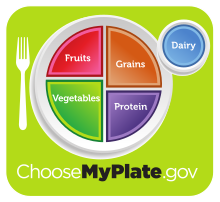Teaching your kiddos to eat a nutritious meal is important! They need nutritious foods to help them grow and develop. It might seem tricky when it comes to trying to feed your kids greens. They might also make a disgusted face when you put your famous healthy dishes on the table and prefer macaroni and cheese with nuggets. Don’t worry, I have several tips for you to make sure your kids are eating a well balanced meal.
Try not to force your kids to eat something. Forcing them to eat when they aren’t hungry might trick them into building habits like overeating when they are full. They will get confused with their inner voice and build bad habits. Instead of pushing them to eat their vegetables, try to encourage them and expose them to new foods.

Offering choices at meal time like celery with chicken with vegetables or apples with peanut butter can give them a sense of authority over their meals. You can also tell your kids that every meal needs to include vegetables, carbohydrates, and one serving of protein and giving them options for the week can greatly benefit their eating habits. Introducing several options to your kids can help them learn what they like or don’t like. Check this website out for a week of healthy options.

Snacks are essential to a kid’s diet to keep their bellies full and energy high during the day. Try to keep healthy snacks around the house instead of junk food. Giving kids a snack is great to add more nutritious food into their diet. Avoid snacks that are prepackaged and make them their snacks. Here is a list of what you can give your kids during snack time ( snack ideas ).
Lastly, always lead by example. Kids are always looking up to their parents and picking up skills from the environment they are in. Your attitude and habits around food heavily influences your little ones. The habits and attitudes around food must be positive because if they are negative then your kids will pick them up as well. Try to eat a healthy and balanced meal with nutritious foods so your kids pick up the same habits. Be a model for them so they can create life long healthy eating habits.






